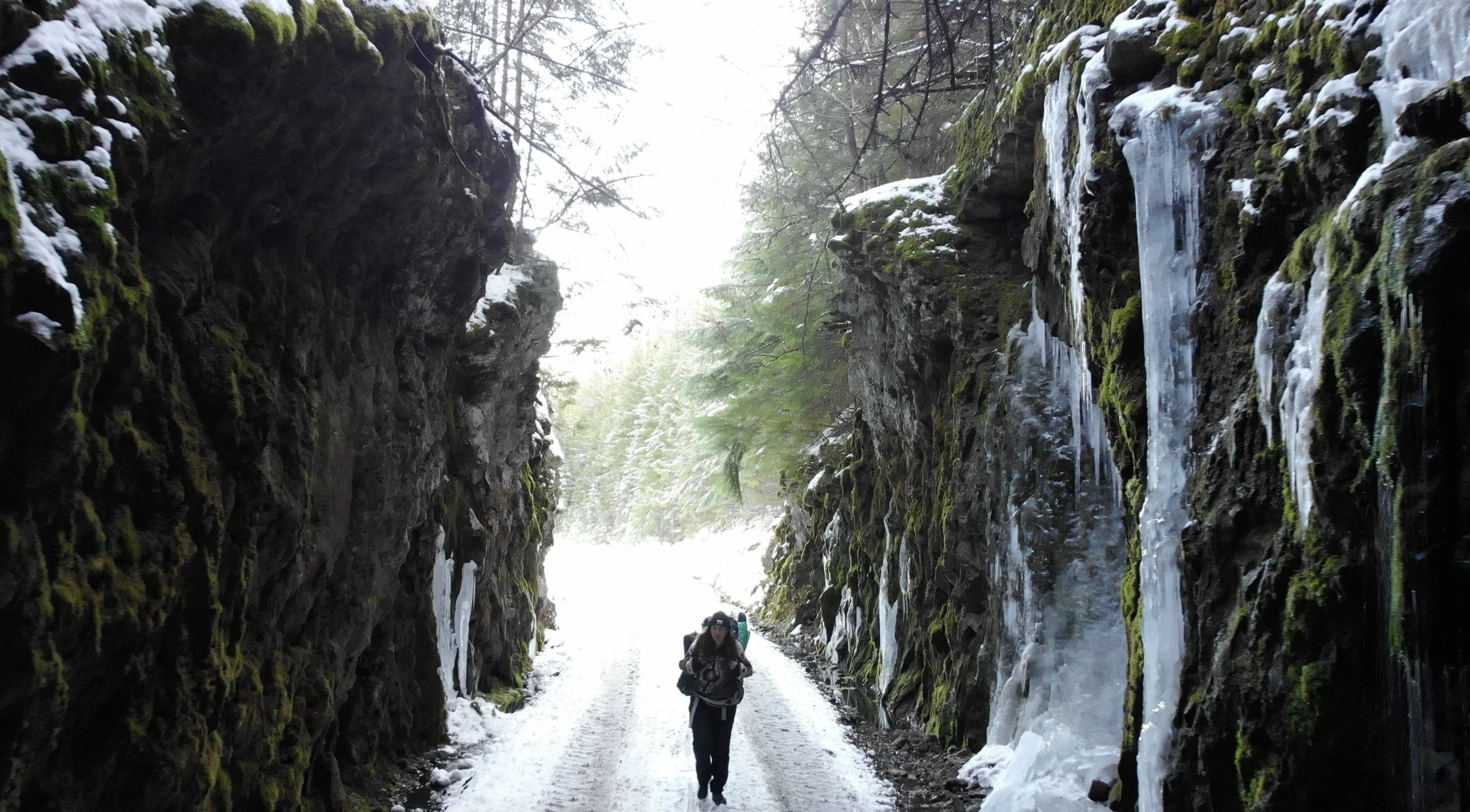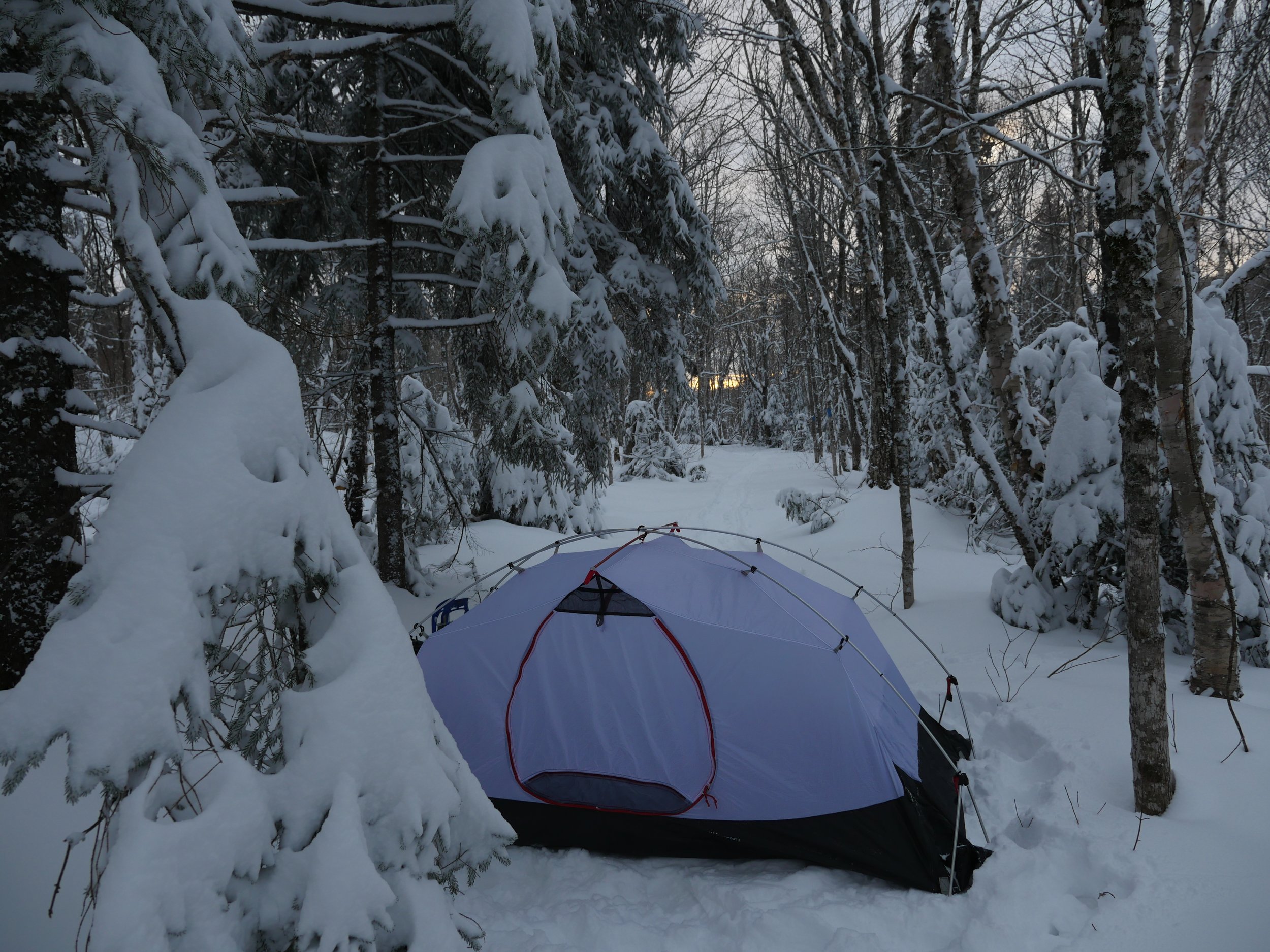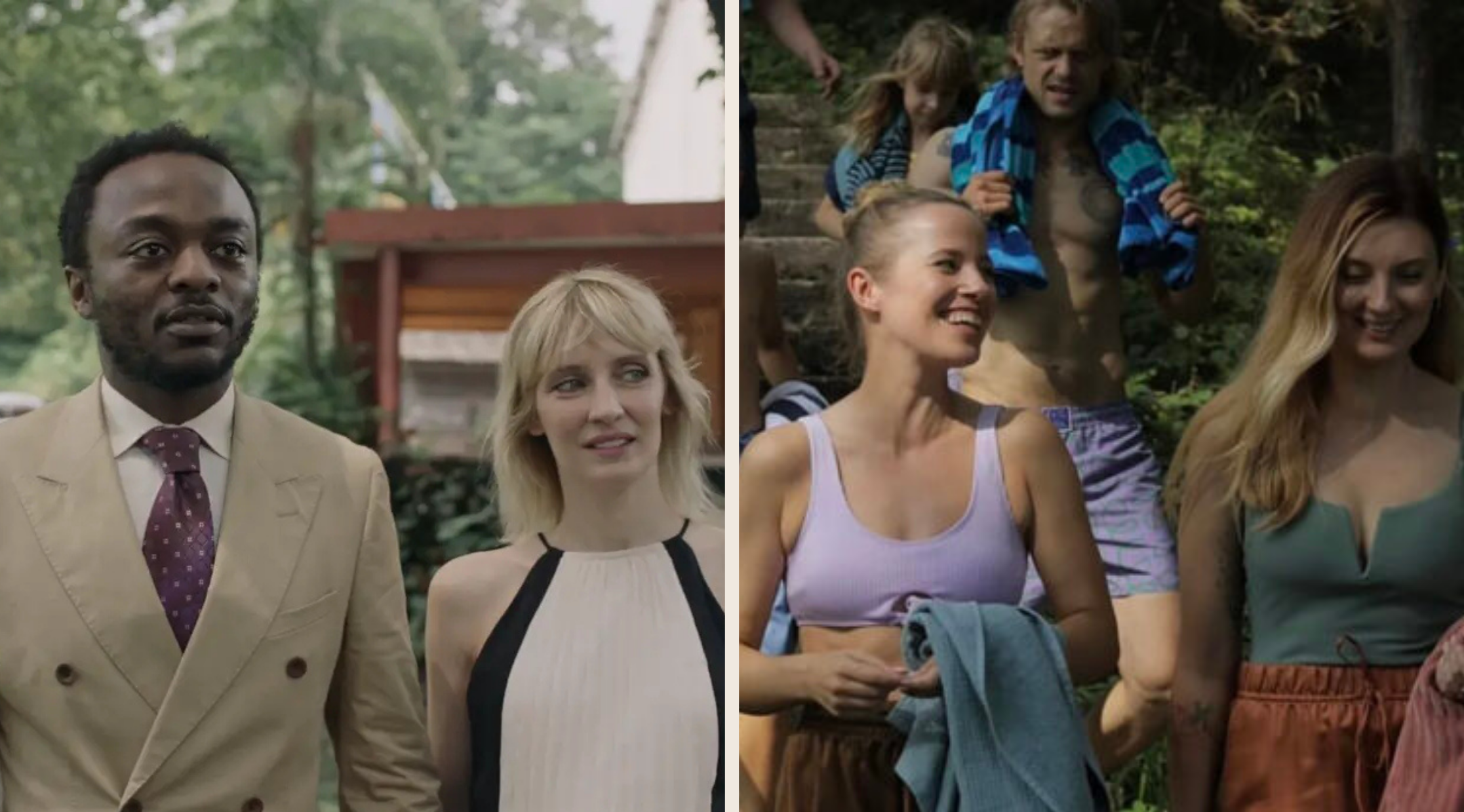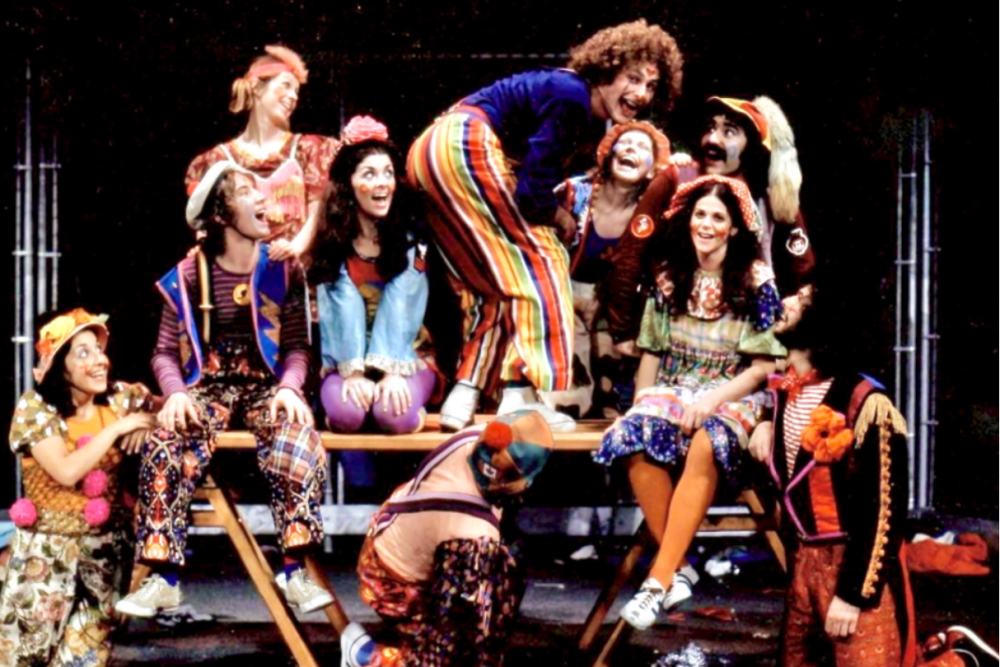Dianne Whelan's 500 Days in the Wild captures her epic trek along 24,000-kilometre Trans Canada Trail
B.C. filmmaker-photographer braved snow, bears, rapids, and other challenges in six-year journey, in Whistler Film Festival premiere
A map of Whelan’s journey in 500 Days in the Wild.
Dianne Whelan paddled thousands of kilometres as part of her trek.
500 Days in the Wild is at the Whistler Film Festival on December 1 and 2; filmmaker Dianne Whelan also takes to the stage in the Women in Focus Keynote Luncheon on December 1 as part of WFF’s Signature Series
IN A SCENE IN her new documentary 500 Days in the Wild, B.C. filmmaker Dianne Whelan has just finished 40 days of gruelling paddling along Bras d’Or Lake in Cape Breton—only a tiny fraction of the 24,000-kilometre Trans Canada Trail journey the film tracks. She’s been swept out to open water. She’s lost five tents. And now she’s lost and alone on her bike in a torrential downpour, at night in the thick woods, with nowhere to sleep on the flooded ground. She’s soaked, frantic, and swearing. Then two burly hunters appear like angels on an ATV out of the dark.
Not that she sees them as angels at first. She’s terrified, and still confronting her fear of being a woman travelling alone—something she says she gradually learned to let go of in the first six months or so of her journey.
“When you're in that mindframe of fear, everything coming at you is from the perspective of fear,” she explains to Stir over a Zoom call from Whistler Film Festival, where 500 Days in the Wild is premiering. “And I mean, there's different fears and different things to be scared of out there. There's your physical fears—when I was looking at the map, I was like, ‘Oh, Lake Superior: What do you mean 168 portages? Is that for real?’ But yes, the most basic fear leaving the gate was absolutely just the fear of being alone in the tent. But then that fear wasn't being substantiated. I also have really bad hearing. My friends that did come out to join me—I would wake up in the morning and they had bug eyes staring at the top of the tent. They hadn't slept a wink and they were like, ‘I can't believe you slept through all that. There was something sniffing around and you were like snoring away.’
“So sometimes, disability is your superpower,” she continues with a laugh. “And animals pick up on resonance, so if you're indifferent, that's a lot better than being in fear, because you're emitting that fear.”
The Trans Canada Trail connects the Atlantic, Arctic, and Pacific Oceans. It’s the longest trail in the world, and Whelan is the first person to have trekked across its entirety, including its waterways—old-style, via canoes (7,000-plus kilometres of paddling, to be specific), snowshoes, bike, and other nonmotorized means. The film starts way back in 2015, at mile zero in Newfoundland, and follows her through snowy plains, raging rivers, and autumn colours, past the pandemic to 2021, when she paddles her way to Vancouver Island.
The affable filmmaker had planned on making the epic trip in the 500 days of the title; it ended up taking six years—and almost three more years of pre- and post-production to finish the deeply personal documentary.
Whelan stresses she’s not an extreme athlete, but she has fearlessly braved extremes making previous films in the Arctic (This Land) and Mount Everest Base Camp (40 Days at Base Camp). In 500 Days in the Wild, though, the journey is more personal. “The world had stopped making sense,” she says in the film; her relationship had recently ended and her dog had died.
“I really needed to rewrite my story,” explains the longtime West Coast photographer and filmmaker. “It was like there was also opportunity. Yeah, it was sad, but there was also an opportunity to do something I could never do if I was in those commitments. What your choices are in life that you want to do with your time: that’s all about what you're carrying inside. You are what you're seeking, what you carry in your heart. So I used to laugh at myself, like as far as what I have learned out there about myself, I think you could meditate in your living room for 40 days and get there a lot easier.”
She continues with a smile: “I always choose films so that even if everything goes to the dogs, I've structured my life to have this experience. So it's a win-win. There's no failure, right? You know, at the very least you've had this really amazing life experience. And you've structured your work career to legitimize this experience. Whereas if you just dropped out, people would be like, ‘Oh, no, what is wrong with you?’”
Whelan also wanted to explore the trail whose connection marked Canada’s 150th birthday—with a deeper recognition that the lands she would travel have been inhabited for thousands of more years by Indigenous peoples. In the film, she strives to honour those ancestors, and is welcomed by numerous Nations along the way. The journey turned into an ecological pilgrimage toward reconciliation, Whelan stopping to consider the water and forests along the way.
Ten days into the film, along a rocky former rail line in Newfoundland, she rips up her schedule for the route.
“You’re not reading the news anymore. You're looking at the wind, you're looking at the water, you're like, What critters am I sharing my earth with here?” she says. “So you start really identifying with the world in a very different way, and listening to it in a different way.”
That meant some serene moments: in the film, Whelan’s camera gazes into endless starry nights, and captures toads, birds, porcupines, and even pelicans she meets along the way. But it also meant some harrowing ones—including a breathless bear encounter, around the same time a fellow traveller was killed by one in the same Northwest Territories region where Whelan and her partner paddle the daunting Great Slave Lake.
But a much bigger threat than bears, Whelan says, is hypothermia. That’s why she takes pains in the film to keep her equipment dry. As for the snowbound tenting? Winter may be her favourite camping weather.
“You know exactly who you're sharing your space with, based on their little prints on the snow,” she says. “So, you know, there's deer or moose or cougar or whatever. I really liked that.”
There was only one moment when she thought about quitting. She had filmed in the Arctic and was picking up the trail back down again in northern Alberta when she got word her mother had what doctors thought was a heart attack, but turned out to be a serious aortic dissection. Whelan paused the journey to head to Vancouver General Hospital.
“I was like, ‘That’s it for me. I'm staying with my mom if she only has six months to live or three months to live, or whatever she needs. She needs me; I'm not going anywhere,’” she recalls. “I spent two weeks in the hospital, and then it was my mom who said, ‘Get out of here,’ as soon as she was out of the hospital. She really just said, ‘What you're doing is incredible. And so please go finish what you've started. There’ll be a part of you that will really regret that later on if you don’t.’
Dianne Whelan enters a dark tunnel during the Western portion of her cross-country journey.
“But I mean, other than that, being active, being outdoors, meeting these people, having these experiences, and getting to film—I actually really loved it,” adds Whelan, who has also created a book about the adventure.
In the end, the filmmaker, who had long celebrated individualism, said her biggest lesson, looking back, was learning the importance of human connection.
“As much as it looks like I was often this woman all alone out there, when you see the [film] credits that are four-and-a-half minutes long you realize no, there are so many people involved,” says Whelan, whose production team was largely female. “And I think of that metaphor that we are like the trees: it looks like we stand alone, but beneath the surface, we're all connected.”
And though Whelan deepened her appreciation for nature and Indigenous belief systems along her adventure, she is also happy that 500 Days in the Wild opened her up to people from all walks of life. “One of the things I'm really proud about in this film is it didn't matter what political party you belonged to or what part of the cultural landscape you were from,” she says, “everybody in this film showed me kindness.” Even—and especially—those hunters in the woods who scared her one rainy night.
Whelan’s tent sits in the snow in 500 Days in the Wild.
















